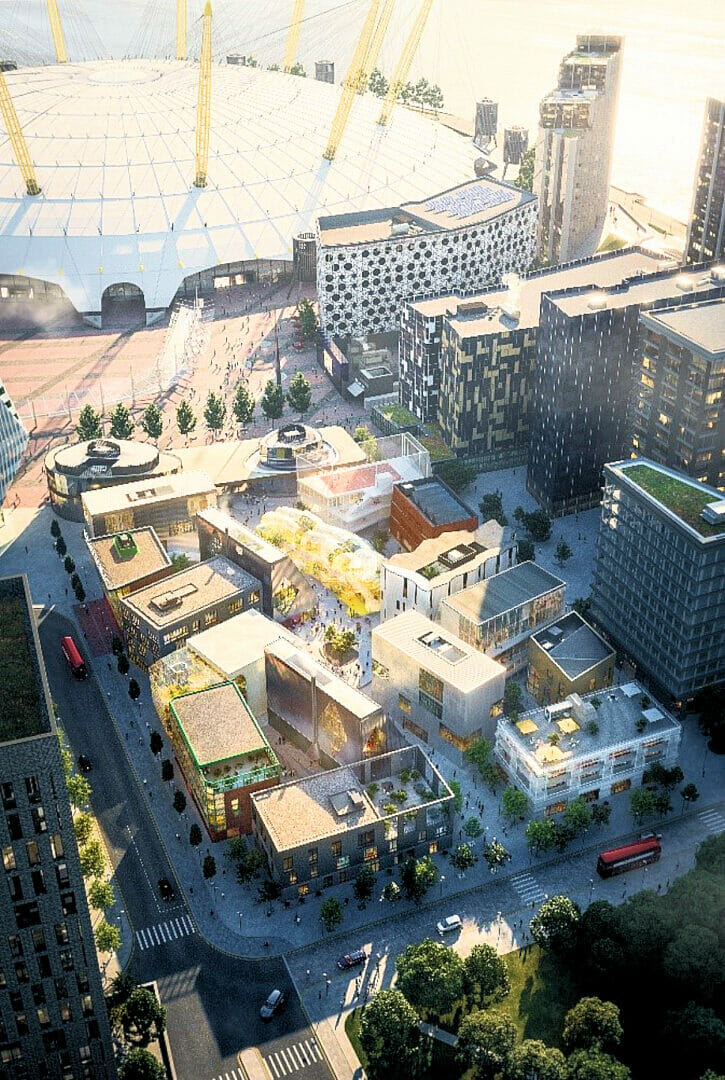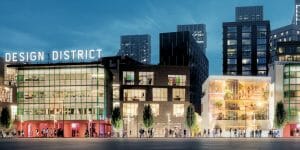
The O2 Arena on the Greenwich Peninsula has a new neighbour – Greenwich Design District – providing 14,000sqm of affordable studios and workshops for creatives working across areas as diverse as design, fashion, art, music and digital technology. This pedestrianised, vibrant neighbourhood, comprises sixteen free-standing buildings, situated around five courtyards and a central public square. With the exception of the single level Food Hall, the buildings range in height from three-to-five levels and are a mix of reinforced concrete, structural steel and cross-laminated timber.
Minimising thermal bridging is crucial
Improved thermal performance is becoming increasingly important in large new build developments and the prevention of thermal bridging has a huge role to play. Ineffectual insulation at cantilever connectivity points results in local heat loss, requiring more energy to maintain the building’s internal temperature. Low internal surface temperatures around the thermal bridge can also cause condensation, leading to structural integrity problems with absorbent insulation products and the potentially serious occurrence of mould growth
Design freedom from Schöck
As the leading international supplier of structural thermal breaks, Schöck has hundreds of variants in its Isokorb range, offering a solution to practically any design detail. The predominating Isokorb at the Design District is for concrete-to-concrete, but not all of the requirements were so relatively straightforward. Building C1 is a prime example. Set on the east side of the main entrance, this three-level workshop and studio building has a basketball court on the roof. It has unusually deep floor zones, several large cantilevered elements and a steel mesh enclosure supported on a braced-steel frame around the court, which utilises Isokorb elements for concrete-to-steel detailing. There is also an external staircase and concrete cantilevered walkway. Where the walkway encloses the staircase, there are particularly large cantilevers and here the walkway slabs, supported by a main beam, enclose cast-in steel beams and three cross-beams. These are bolted back to the structural slabs using Isokorb units for steel-to-steel construction and steel construction-to-concrete slabs.
Large capacity thermal breaks required
Building D1 is a community of studios, workshops and office spaces, which structurally consists of robust concrete slabs – with trees located on the external decks. Some extremely large capacity structural thermal break elements were developed to take the loads. Other buildings that incorporate Schöck Isokorb solutions are A1; which marks the main access to the Design District. D4, with its tall slim facade; and A4 on the western edge of the site, which welcomes visitors with a large roof-mounted illuminated sign.
Totally verifiable performance
The comprehensive Schöck Isokorb range enables concrete-to-concrete, steel–to-steel and concrete-to-steel detailing. And there are solutions too that provide a maintenance-free alternative to wrapped parapets; along with a product which thermally insulates connections for reinforced concrete walls and columns. Products meet full compliance with the relevant UK building regulations, have NHBC approval and offer LABC Registration. There is also the security of independent BBA Certification.
For a free copy of the Schöck Thermal Bridging Guide; the Schöck Specifiers Guide or to view the range of downloadable software, contact Schöck on 01865 290 890 or visit the website at www.schoeck.co.uk


